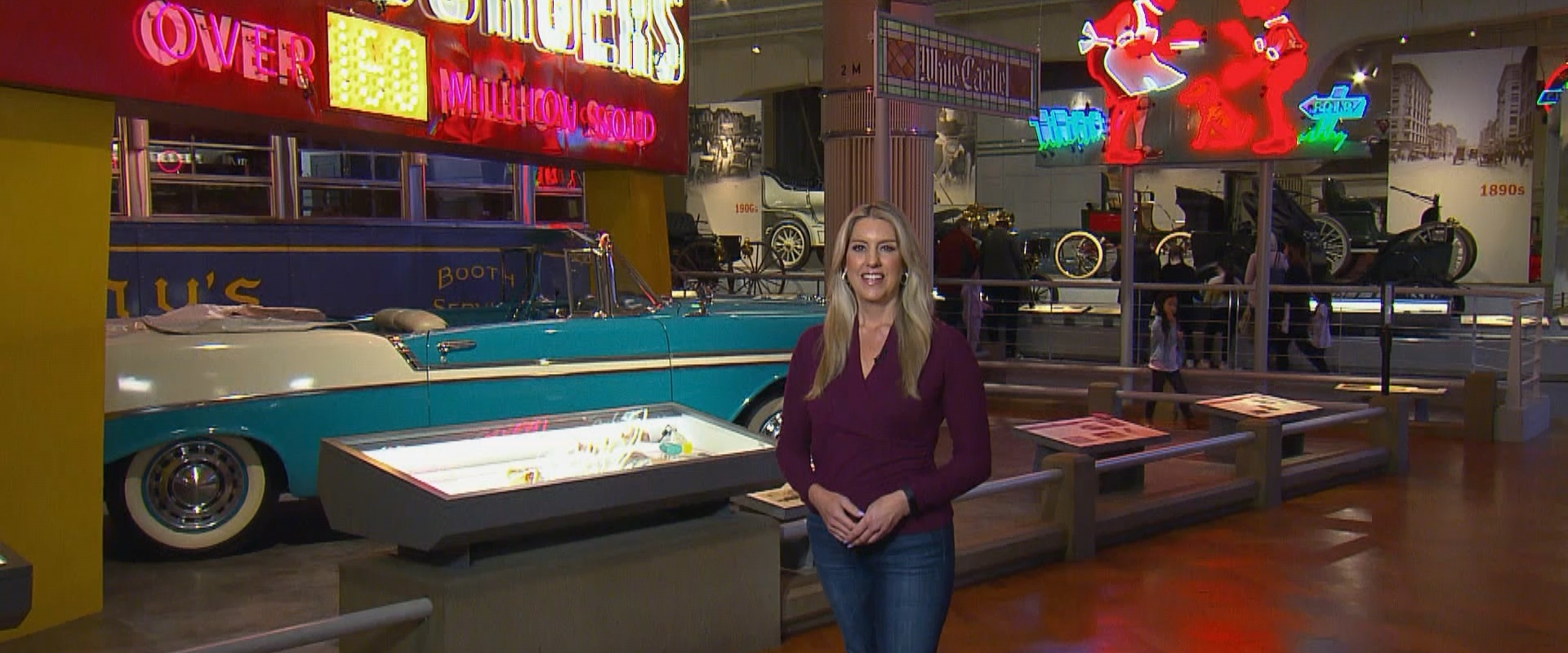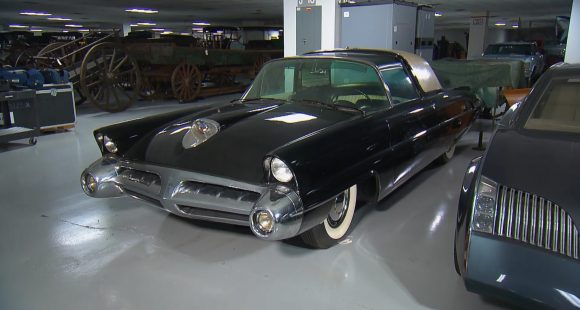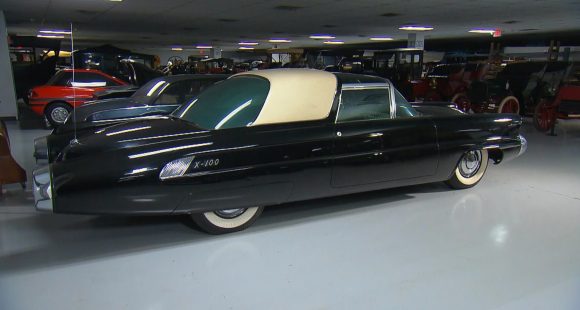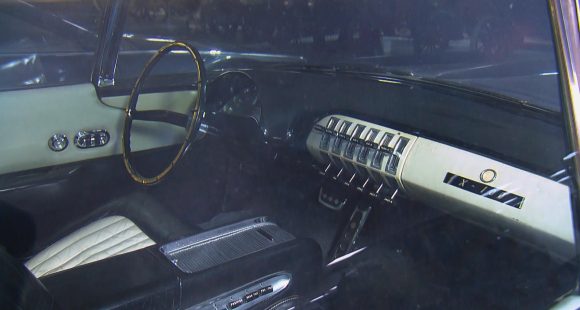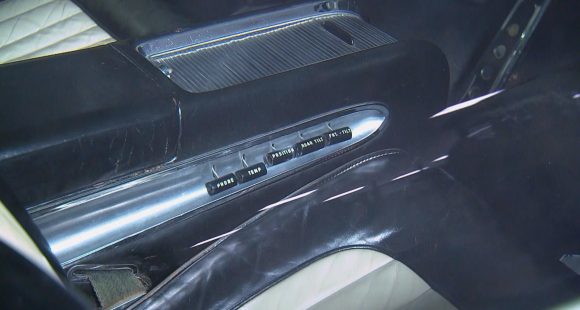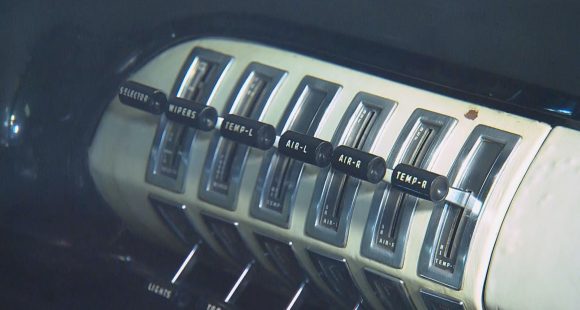Behind-the-Scenes at the Henry Ford Museum
The Henry Ford Museum in Dearborn, Michigan is well-known for showcasing milestone innovations in transportation. But there’s much more to The Henry Ford than first meets the eyes. Our Stephanie Hart had a chance to venture underground and explore the museum’s secret storage areas filled with an eclectic mix of rarely seen cars.
STEPHANIE HART: This is the Driving America exhibit here at the Henry Ford museum in Dearborn, Michigan. While it’s fantastic, this is actually not what we’re here to see. We’re here to check out about 150 or so cars in this secret storage area adjacent to the museum. A lot of these vehicles haven’t been seen in years.
It’s definitely cool to be underground surrounded by 100 years of automotive history. Immediately, this rare 1953 Ford X-100 concept car caught my attention. It looks very futuristic for its time and back then it was called a “laboratory on wheels.”
MATT ANDERSON: It’s interesting to note that some of the styling cues did make it into production. The front end looks a lot like Lincolns from the later 50s and if you look at the rear end you can see some Thunderbird. 1953 was the 50th anniversary of Ford Motor Company so they wanted to celebrate by building a concept car with what they describe as 50 new innovations.
STEPHANIE HART: Some of them, like heated seats and the telephone, eventually became standard. Some did not.
Well, some of those new innovations didn’t quite catch on like the electric shaver in the glove box and the Dictabelt recorder in the center console, the idea being that the driver could dictate a letter, for example, on his way to work.
MATT ANDERSON: My favorite idea in the car, though: It actually has hydraulic jacks built into the four corners so if you get a flat tire you don’t have to mess with the screw jack. The car just lifts itself up off the road.
STEPHANIE HART: One of the most unusual concept cars here is the 1962 Budd XR-400. It was based on a Rambler Ambassador chassis, but with a powerful V8 engine and a sporty looking body.
MATT ANDERSON: You’ll recognize this as the same formula that Ford used with the Mustang, putting a sporty body on the Falcon. And it’s interesting to wonder what would have happened if Budd had convinced AMC to put this thing into production. AMC passed. They just thought the car was a little too small. I think they also, frankly, didn’t have the financial resources to take a big gamble like that, but it’s a cool car nevertheless and a great what-if question.
STEPHANIE HART: Many people don’t realize that electric vehicles were on our roads at the turn of the 20th century, cars like this 1912 Baker Electric Victoria model, and range anxiety was an issue back then too.
MATT ANDERSON: They had range of probably about 30-35 miles in real world conditions, though some manufacturers advertised range up to 70 miles on a charge, which is pretty impressive thinking about 1910 or so.

STEPHANIE HART: Another significant car in the collection is this 1923 Copper Cooled Chevy. It’s powered by an air-cooled engine.
MATT ANDERSON: There are advantages to that. You don’t have to carry coolant or water around. You are going to be free of the engine cracking or the block cracking if you forget to drain the water in the winter time. But unfortunately, Chevy just kind of rushed into production a little too quickly so the cars began to overheat, and of the 759 or so that they built, all of them were recalled.
STEPHANIE HART: This one is rare because it was purchased by Ford Motor Company engineers to size up the competition. This secret storage facility also includes luxury cars. This one stuck out to me. Can you guess why?
MATT ANDERSON: One of the more luxurious cars in our collection is a 1926 Rolls Royce New Phantom that was built for JP Morgan Jr., son of the famous financier, and you look at this car, it feels like it’s about one and a half times life size.
STEPHANIE HART: You probably notice it has an elevated roof. That’s because very tall hats were in style back then.
All of the cars in this secret storage facility eventually make their way upstairs to the museum’s main floor so everyone can enjoy them. Each one tells an interesting story about the evolution of the automobile while empowering us as we steer toward the future of transportation.




